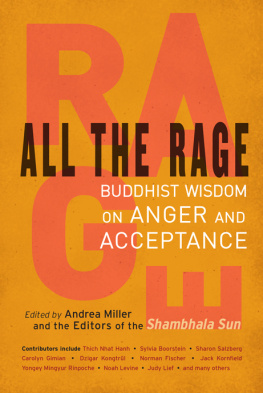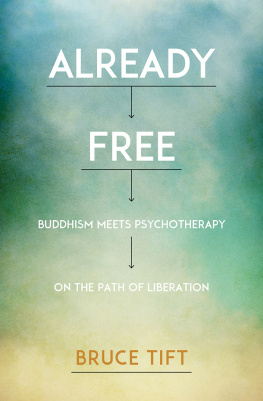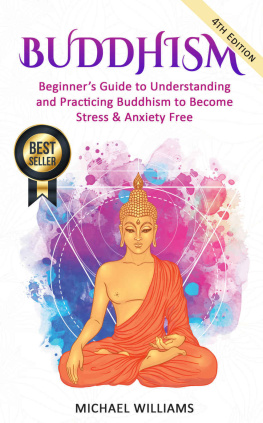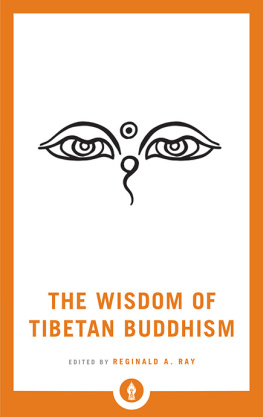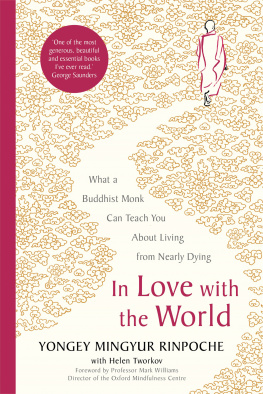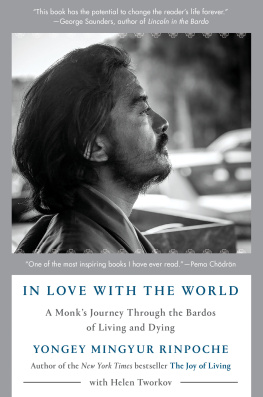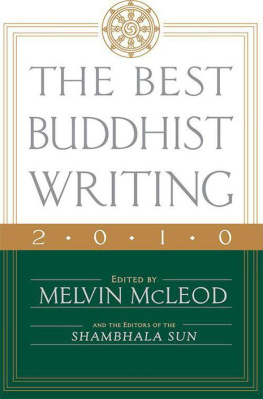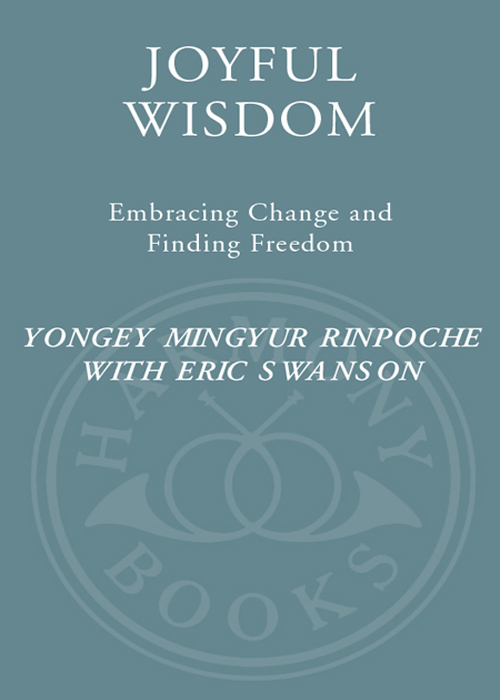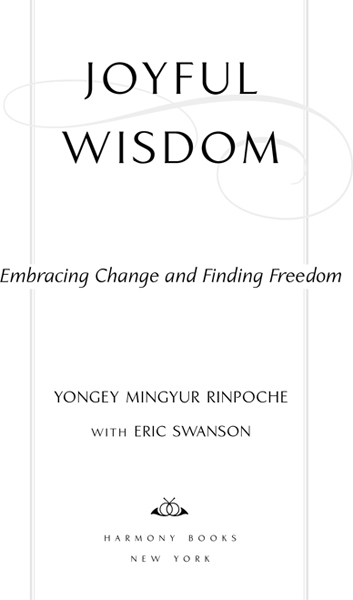5.
9.
12.
INTRODUCTION
In the middle of difficulty lies opportunity.
A LBERT E INSTEIN
ON A RECENT teaching tour of North America, I was told by a student that an influential philosopher of the twentieth century had called the era in which we live the age of anxiety.
Why? I asked him.
He explained to me that, according to this philosopher, two bloody world wars had left a kind of emotional scar in people's minds. Never before had so many people been killed in warfareand worse, the high death toll was a direct result of industrial and scientific advances that were supposed to have made human life more civilized and comfortable.
Since those terrible wars, he went on to say, nearly every advance we've made in terms of material comfort and convenience has had a shadow side. The same technological breakthroughs that have given us cell phones, supermarket scanners, ATMs, and personal computers are the basis for creating weapons that can wipe out entire populations and perhaps destroy the planet we call home. E-mail, the Internet, and other computer technologies that were supposed to make our lives easier often overwhelm us with too much information and too many possibilities, all supposedly urgent, demanding our attention.
The news we hear, he continuedonline, in magazines and newspapers, or on TVis overwhelmingly unpleasant: full of crises, violent images, and predictions of worse to come. I asked him why these reports focus so much on violence, crime, and terrorism rather than on the good deeds that people have done and the successes that people have accomplished.
Bad news sells, he replied.
I didn't understand that phrase, and asked him what he meant.
Disasters get people's attention, he explained. People are drawn to bad news because it confirms our worst fears that life is unpredictable and scary. We're always on the lookout for the next terrible thing so we can perhaps prepare against itwhether it's a stock market crash, a suicide bomb, a tidal wave, or an earthquake. Aha, we think, I was right to be scared now let me think about what I can do to protect myself.
As I listened to him, I realized that the emotional climate he was describing wasn't at all unique to the modern age. From the twenty-five-hundred-year-old perspective of Buddhism, every chapter in human history could be described as an age of anxiety. The anxiety we feel now has been part of the human condition for centuries. In general, we respond to this basic unease and the disturbing emotions that arise from it in two distinct ways. We try to escape or we succumb. Either route often ends up creating more complications and problems in our lives.
Buddhism offers a third option. We can look directly at the disturbing emotions and other problems we experience in our lives as stepping-stones to freedom. Instead of rejecting them or surrendering to them, we can befriend them, working through them to reach an enduring, authentic experience of our inherent wisdom, confidence, clarity, and joy.
How do I apply this approach? many people ask. How do I take my life on the path? This book is, in many ways, a response to their questions: a practical guide to applying the insights and practices of Buddhism to the challenges of everyday life.
It's also meant for people who may not be experiencing any problems or difficulties at the moment; people whose lives are proceeding quite happily and contentedly. For these fortunate individuals it serves as an examination of the basic conditions of human life from a Buddhist perspective that may prove useful, if only as a means of discovering and cultivating a potential of which they might not even be aware.
In some ways, it would be easy just to organize the ideas and methods discussed in the following pages as a simple instruction manualthe kind of pamphlet you get when you buy a cell phone, for instance. Step One: Check to make sure that the package includes all of the following Step Two: Remove the battery cover on the back of the phone. Step Three: Insert the battery. But I was trained in a very traditional fashion, and it was instilled in me from a young age that a basic understanding of the principleswhat we might call the viewwas essential in order to derive any real benefit from practice. We have to understand our basic situation in order to work with it. Otherwise, our practice goes nowhere; we're just flailing around blindly without any sense of direction or purpose.
For this reason, it seemed to me that the best approach would be to organize the material into three parts, following the pattern of classical Buddhist texts. Part One explores our basic situation: the nature and causes of the various forms of unease that condition our lives and their potential to guide us toward a profound recognition of our own nature. Part Two offers a step-by-step guide through three basic meditation practices aimed at settling our minds, opening our hearts, and cultivating wisdom. Part Three is devoted to applying the understanding gained in Part One and the methods described in Part Two to common emotional, physical, and personal problems.
While my own early struggles may contribute in some small way to the topics explored in the following pages, a far greater share of insight has come from my teachers and friends. I owe a special debt of gratitude, however, to the people I've met over the past twelve years of teaching around the world, who have spoken so candidly about their own lives. The stories they've told me have broadened my understanding of the complexities of emotional life and deepened my appreciation of the tools I learned as a Buddhist.
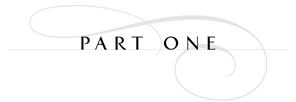
PRINCIPLES
Our life is shaped by the mind;
we become what we think.
The Dhammapada,
translated by Eknath Easwaran
1
LIGHT IN THE TUNNEL
The sole purpose of human existence is to kindle
a light in the darkness of mere being.
C ARL J UNG , Memories, Dreams, Reflections,
translated by Richard Winston and
Clara Winston
SEVERAL YEARS AGO I found myself strapped inside an fMRI, a type of brain scanner that, to me, looked like a round, white coffin. I lay-on a flat examination table that slid like a tongue inside the hollow cylinder which, I was told, held the scanning equipment. My arms, legs, and head were restrained so that it was nearly impossible to move, and a bite guard was inserted into my mouth to keep my jaws from moving. All the preparationbeing strapped onto the table and so forthwas fairly interesting, since the technicians very courteously explained what they were doing and why. Even the sensation of being inserted into the machine was somewhat soothing, though I could see how someone with a very active imagination might feel as though he or she were being swallowed.




